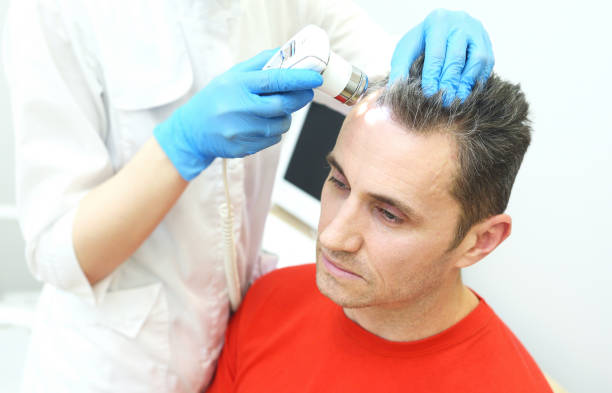Platelet-Rich Plasma: The Hair Loss Game-Changer
Platelet-rich plasma (PRP) therapy has emerged as a promising treatment for hair loss, offering hope to millions struggling with thinning locks. This innovative approach harnesses the body's own healing mechanisms to stimulate hair growth and improve scalp health. Originally developed for orthopedic surgery, PRP has found its way into the world of dermatology and trichology, revolutionizing the way we approach hair restoration. As more research emerges and success stories multiply, PRP is quickly becoming a go-to option for those seeking a natural, minimally invasive solution to hair loss.

Historical Context and Evolution
The use of PRP in medicine dates back to the 1970s when it was first utilized in transfusion medicine. Its application in hair restoration, however, is a more recent development. The first documented use of PRP for hair loss was in the early 2000s, with pioneering studies showing promising results. Since then, the technique has been refined and standardized, leading to its growing popularity in dermatology clinics worldwide.
The PRP Procedure Explained
The PRP treatment process begins with a blood draw, typically from the patient’s arm. The blood is then placed in a centrifuge, which spins it at high speeds to separate the platelets from other blood components. The resulting platelet-rich plasma is then carefully injected into targeted areas of the scalp using very fine needles. Most patients require multiple sessions, usually spaced about a month apart, to achieve optimal results.
Effectiveness and Patient Experiences
While individual results can vary, many patients report significant improvements in hair density and thickness after undergoing PRP therapy. Studies have shown that PRP can increase hair count by up to 30% in some cases. Patients often begin to notice results within three to six months of starting treatment, with continued improvement over time. The non-surgical nature of PRP also means less risk and faster recovery compared to more invasive hair restoration procedures.
Comparing PRP to Other Hair Loss Treatments
PRP offers several advantages over traditional hair loss treatments like minoxidil or finasteride. Unlike these medications, which often need to be used indefinitely, PRP provides longer-lasting results with periodic maintenance treatments. Additionally, PRP is suitable for both men and women and can be used in combination with other hair restoration techniques for enhanced results. However, it’s important to note that PRP may not be effective for all types of hair loss, particularly in cases of complete baldness.
The Future of PRP in Hair Restoration
As research continues to evolve, new applications and refinements of PRP therapy are emerging. Some clinics are now combining PRP with stem cell therapy or growth factors to potentially enhance its effectiveness. There’s also growing interest in using PRP for other hair-related concerns, such as alopecia areata and scarring alopecia. These developments suggest that PRP will likely play an increasingly important role in the future of hair restoration medicine.
Addressing Common Concerns and Misconceptions
Despite its growing popularity, there are still some misconceptions about PRP therapy. One common concern is the safety of using blood products. However, because PRP uses the patient’s own blood, the risk of allergic reactions or infections is extremely low. Another misconception is that PRP is a one-time cure for hair loss. In reality, while PRP can significantly improve hair growth, it typically requires ongoing maintenance treatments to sustain results.
The Role of Diet and Lifestyle in PRP Success
While PRP can be a powerful tool in combating hair loss, its effectiveness can be enhanced by adopting a healthy lifestyle. A balanced diet rich in proteins, vitamins, and minerals is essential for optimal hair growth. Stress management, regular exercise, and adequate sleep also play crucial roles in maintaining healthy hair. Patients undergoing PRP therapy are often advised to make these lifestyle changes to maximize their treatment outcomes.
Choosing a PRP Provider
As with any medical procedure, the success of PRP therapy largely depends on the skill and experience of the provider. When considering PRP for hair loss, it’s crucial to choose a board-certified dermatologist or hair restoration specialist with extensive experience in the technique. Patients should ask about the provider’s training, the number of PRP procedures they’ve performed, and request before-and-after photos of previous patients to gauge potential results.




